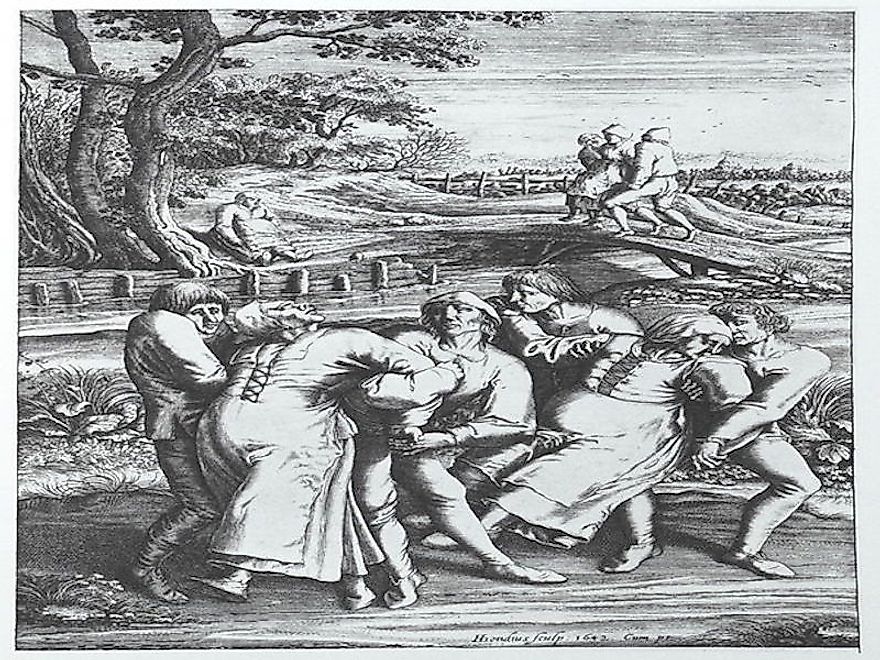The Strasbourg Dancing Plague of 1518: When People Danced To Their Death

The dancing plague, also known as the dancing mania, St John's Dance or chreomania was a societal phenomenon that primarily occurred on the mainland of Europe between the 14th and 17th centuries. The dancing hysteria involved masses dancing hysterically, sometimes the numbers reaching thousands at a time. The frenzy affected people of all demographics, including adults and children who would dance until they collapsed from exhaustion. The earliest outbreak of dancing plagues known in history took place during the 7th century reappearing several times before ceasing around the 17th century. One of the first major outbreaks of the phenomenon took place in the Holy Roman Empire in 1374 rapidly spreading to the whole of Europe including the Netherlands, England, and Germany.
The 1518 Phenomenon
On July 1518, a woman by the name of Frau Troffea began to viciously dance in the streets of the urban center of Strasbourg, France, in full view of her neighbors. There was no music to dance to as her face showed no expression of enjoyment, she seemed unable to stop herself from the delirium. If the incident had remained isolated the city elders might have deduced it a case of madness or demonic possession, however, immediately after Troffea began her dancing frenzy, one of her neighbors joined followed by others. By the close of the week more than 30 people had joined the frenzy and were dancing day and night on the streets of the city of Strasbourg. The dancing did not stop and by the time a month had elapsed about 400 Strasbourg citizens had joined in the dancing hysteria. Following a series of heavy dancing, some of the citizens began to succumb to exhaustion, stroke, and heart attacks. The authorities believed that the cure for the frenzy was more dancing day and night. They decided to construct a wooden stage for the dancers and even hired musicians and instrumentalists to play music, and professional dancers were paid to keep the dancing going around the clock.
Theories Behind The Phenomenon
Modern researchers have longtime been puzzled over what possible causes could have contributed to the phenomenon. There have been many theories developed to explain what caused this bizarre incident.
St Vitus
During the 16th century Europeans believed that St Vitus, a Catholic saint was responsible for cursing people with the dancing plague. In 1518, Strasbourg was experiencing disease and famine, which, when combined with the St Vitus myth is believed to have set off a stress induced- hysteria which affected most of the city.
Ergotism
Some researchers have attributed the phenomenon to ergotism which suggested that the dancers had ingested ergot, a psychotropic mold that grows on stalks of rye. Ergotism is known to trigger delusions and spasms, but results to hardships in coordinated movements therefore disqualifying it as a substantial cause for the phenomenon.
Heretical Cult
Some researchers also suggest that some of the dancers belonged to a heretical cult. However, this hypothesis is highly unlikely since the dancers were believed to have expressed distress and the need for help. The contemporaries were sure that it was not the wish of the affected citizens to dance. Other theories include a mass outbreak of hysteria however, none of the theories fully explain the dancing plague of 1518. After days and nights of endless dancing, one by one the dancers gave up and bringing the dancing epidemic of 1518 to a mysterious, unexplainable end.







